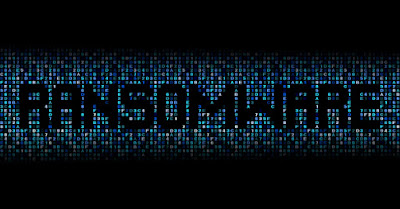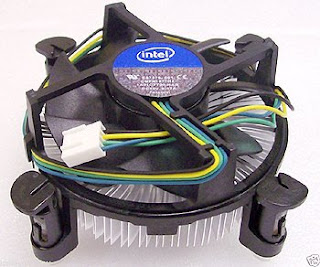LET’S TALK ABOUT HACKERS -
PART 2
Main Concept: A cracker
or cracking is to "gain unauthorized access to a computer in order to
commit another crime such as destroying information contained in that
system"
HACKING TECHNIQUES AND OTHERS:
VULNERABILITY SCANNER: A vulnerability scanner is
a tool used to quickly check computers on a network for known weaknesses.
Hackers also commonly use port scanners. These check to see which ports on a
specified computer are "open" or available to access the computer,
and sometimes will detect what program or service is listening on that port,
and its version number.
FINDING VULNERABILITIES: Hackers may also attempt
to find vulnerabilities manually. A common approach is to search for possible
vulnerabilities in the code of the computer system then test them, sometimes
reverse engineering the software if the code is not provided.
BRUTE-FORCE ATTACK: Password guessing. This
method is very fast when used to check all short passwords, but for longer
passwords other methods such as the dictionary attack are used, because of the
time a brute-force search takes.
PASSWORD CRACKING: Password cracking is the
process of recovering passwords from data that has been stored in or
transmitted by a computer system. Common approaches include repeatedly trying
guesses for the password, trying the most common passwords by hand, and
repeatedly trying passwords from a "dictionary", or a text file with
many passwords.
PACKET ANALYZER: A packet analyser
("packet sniffer") is an application that captures data packets,
which can be used to capture passwords and other data in transit over the
network.
SPOOFING ATTACK (PHISHING): A spoofing
attack involves one program, system or website that successfully masquerades as
another by falsifying data and is thereby treated as a trusted system by a user
or another program — usually to fool programs, systems or users into revealing
confidential information, such as user names and passwords.
ROOTKIT: A rootkit is a program that uses low-level,
hard-to-detect methods to subvert control of an operating system from its
legitimate operators. Rootkits usually obscure their installation and attempt
to prevent their removal through a subversion of standard system security. They
may include replacements for system binaries, making it virtually impossible
for them to be detected by checking process tables.
SOCIAL ENGINEERING: In the second stage of the
targeting process, hackers often use Social engineering tactics to get enough
information to access the network. They may contact the system administrator
and pose as a user who cannot get access to his or her system.
THIS ONE IS NOT RELATED WITH SOCIAL NETWORKS!
Hackers who use
this technique must have cool personalities, and be familiar with their
target's security practices, in order to trick the system administrator into
giving them information. In some cases, a help-desk employee with limited security
experience will answer the phone and be relatively easy to trick. Another
approach is for the hacker to pose as an angry supervisor, and when his/her
authority is questioned, threaten to fire the help-desk worker. Social
engineering is very effective, because users are the most vulnerable part of an
organization. No security devices or programs can keep an organization safe if
an employee reveals a password to an unauthorized person.
Social
engineering can be broken down into four sub-groups:
- Intimidation As
in the "angry supervisor" technique above, the hacker convinces the
person who answers the phone that their job is in danger unless they help them.
At this point, many people accept that the hacker is a supervisor and give them
the information they seek.
- Helpfulness The
opposite of intimidation, helpfulness exploits many people's natural instinct
to help others solve problems. Rather than acting angry, the hacker acts
distressed and concerned. The help desk is the most vulnerable to this type of
social engineering, as (a.) its general purpose is to help people; and (b.) it
usually has the authority to change or reset passwords, which is exactly what
the hacker wants.
- Name-dropping The
hacker uses names of authorized users to convince the person who answers the
phone that the hacker is a legitimate user him or herself. Some of these names,
such as those of webpage owners or company officers, can easily be obtained
online. Hackers have also been known to obtain names by examining discarded
documents (so-called "dumpster diving").
- Technical Using
technology is also a way to get information. A hacker can send a fax or email
to a legitimate user, seeking a response that contains vital information. The
hacker may claim that he or she is involved in law enforcement and needs
certain data for an investigation, or for record-keeping purposes.
TROJAN HORSES: A Trojan horse is a
program that seems to be doing one thing but is actually doing another. It can
be used to set up a back door in a computer system, enabling the intruder to
gain access later. (The name refers to the horse from the Trojan War, with the
conceptually similar function of deceiving defenders into bringing an intruder
into a protected area.)
COMPUTER VIRUS: A virus is a
self-replicating program that spreads by inserting copies of itself into other
executable code or documents. By doing this, it behaves similarly to a
biological virus, which spreads by inserting itself into living cells. While
some viruses are harmless or mere hoaxes, most are considered malicious.
COMPUTER WORM: Like a virus, a worm is
also a self-replicating program. It differs from a virus in that (a.) it
propagates through computer networks without user intervention; and (b.) does
not need to attach itself to an existing program. Nonetheless, many people use
the terms "virus" and "worm" interchangeably to describe
any self-propagating program.
KEYSTROKE LOGGING: A keylogger is a tool
designed to record ("log") every keystroke on an affected machine for
later retrieval, usually to allow the user of this tool to gain access to
confidential information typed on the affected machine. Some keyloggers use
virus-, trojan-, and rootkit-like methods to conceal themselves. However, some
of them are used for legitimate purposes, even to enhance computer security.
For example, a business may maintain a keylogger on a computer used at a point
of sale to detect evidence of employee fraud.
TOOLS AND PROCEDURES: A thorough examination of
hacker tools and procedures may be found in Cengage Learning's E|CSA
certification workbook.
HACKER CLASSIFICATION
Several subgroups of the computer underground with different
attitudes use different terms to demarcate themselves from each other, or try
to exclude some specific group with whom they do not agree. Members of the
computer underground should be called crackers.
- WHITE HAT: A white hat hacker breaks security for non-malicious reasons, either to test their own security system, perform penetration tests or vulnerability assessments for a client - or while working for a security company which makes security software.
- BLACK HAT: A "black hat" hacker is a hacker who "violates computer security for little reason beyond maliciousness or for personal gain". Black hat hackers form the stereotypical, illegal hacking groups often portrayed in popular culture, and are "the epitome of all that the public fears in a computer criminal".
- GREY HAT: A grey hat hacker lies between a black hat and a white hat hacker. A grey hat hacker may surf the Internet and hack into a computer system for the sole purpose of notifying the administrator that their system has a security defect.
- ELITE HACKER: A social status among hackers, elite is used to describe the most skilled. Newly discovered exploits circulate among these hackers. Elite groups such as Masters of Deception conferred a kind of credibility on their members.
- SCRIPT KIDDIE: A script kiddie (known as a skid or skiddie) is an unskilled hacker who breaks into computer systems by using automated tools written by others, usually with little understanding of the underlying concept.
- NEOPHYTE: A neophyte ("newbie", or "noob") is someone who is new to hacking or phreaking and has almost no knowledge or experience of the workings of technology and hacking.
- BLUE HAT: A blue hat hacker is someone outside computer security consulting firms who is used to bug-test a system prior to its launch, looking for exploits so they can be closed.
- HACKTIVIST: A hacktivist is a hacker who utilizes technology to publicize a social, ideological, religious or political message. Can be divided into two main groups: Cyberterrorism: Activities involving website defacement or denial-of-service attacks. Freedom of information: Making information that is not public, or is public in non-machine-readable formats, accessible to the public.
- NATION STATE: Intelligence agencies and cyberwarfare operatives of nation states.
- ORGANIZED CRIMINAL GANGS: Groups of hackers that carry out organized criminal activities for profit.


























,%20Endpoint%20Detection%20and%20Response%20(EDR),%20and%20Extended%20Detection%20and%20Response%20(XDR).gif)
